Uganda, known as the “Pearl of Africa,” is blessed with extraordinary biodiversity and a rich cultural heritage. While visitors often come for the wildlife, the indigenous communities surrounding the national parks in Uganda offer equally profound experiences. Each protected area or reserve has deep connections with local tribes who have lived in harmony with these lands for generations, often long before they were designated as conservation areas. This article explores the cultural diversity surrounding Uganda’s magnificent national parks.
Bwindi Impenetrable National Park
The Batwa (Twa) People
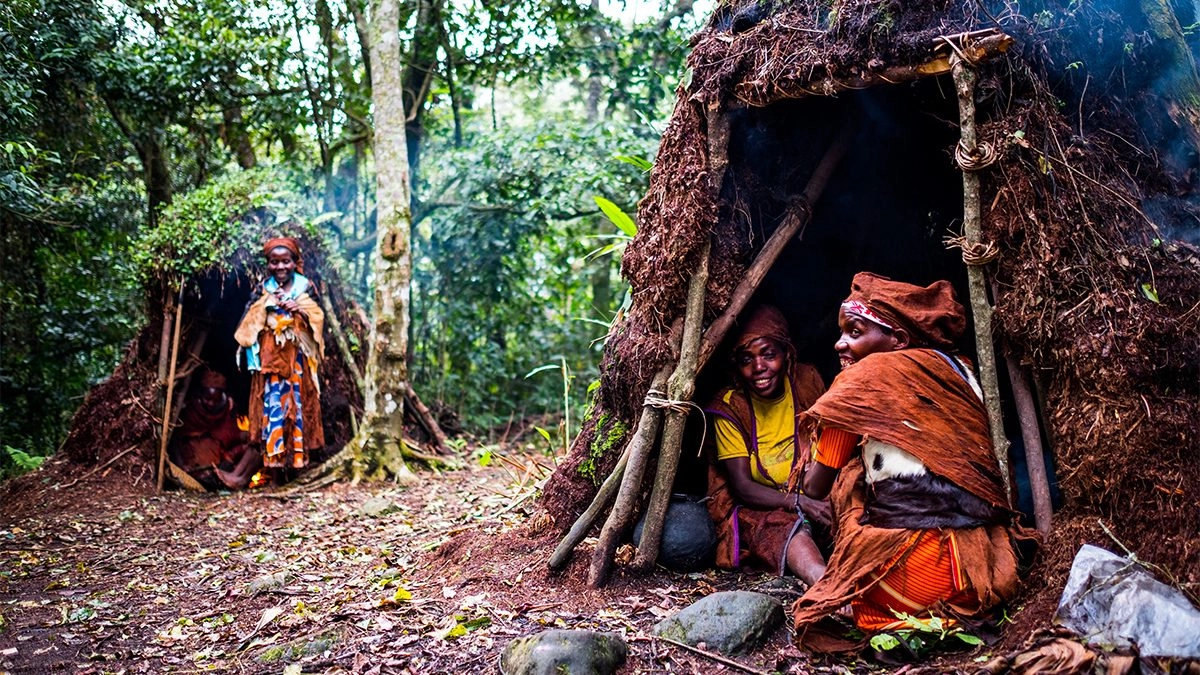 The Batwa pygmies, sometimes called “The Keepers of the Forest,” are among the oldest indigenous tribes in the Great Lakes region of Africa. Standing at an average height of 4-5 feet, they have lived as hunter-gatherers in the forest for thousands of years. Their profound knowledge of forest plants and animals made them exceptional hunters and gatherers with minimal impact on the environment.
The Batwa pygmies, sometimes called “The Keepers of the Forest,” are among the oldest indigenous tribes in the Great Lakes region of Africa. Standing at an average height of 4-5 feet, they have lived as hunter-gatherers in the forest for thousands of years. Their profound knowledge of forest plants and animals made them exceptional hunters and gatherers with minimal impact on the environment.
When Bwindi was gazetted as a national park in 1991 to protect the endangered mountain gorillas, the Batwa were displaced from their ancestral lands without compensation or alternatives. Today, many Batwa communities live on the edges of the forest, working to preserve their traditional knowledge and skills through cultural performances and guided forest walks for tourists.
The Bakiga People
The Bakiga (or Kiga) are the predominant tribe around Bwindi, known as “people of the mountains.” Unlike the Batwa, they are primarily agriculturalists who settled in the region during the 16th-17th centuries as they migrated from Rwanda. The fertile volcanic soils around Bwindi provided ideal conditions for their terraced farming practices.
The Bakiga are known for their resourcefulness, industriousness, and rich cultural traditions including energetic dances like the “Kizino” and “Ekitaguriro.” Their traditional homesteads, craft-making skills, and agricultural practices reflect centuries of adaptation to the mountainous landscape.
Queen Elizabeth National Park
The Bakonzo People
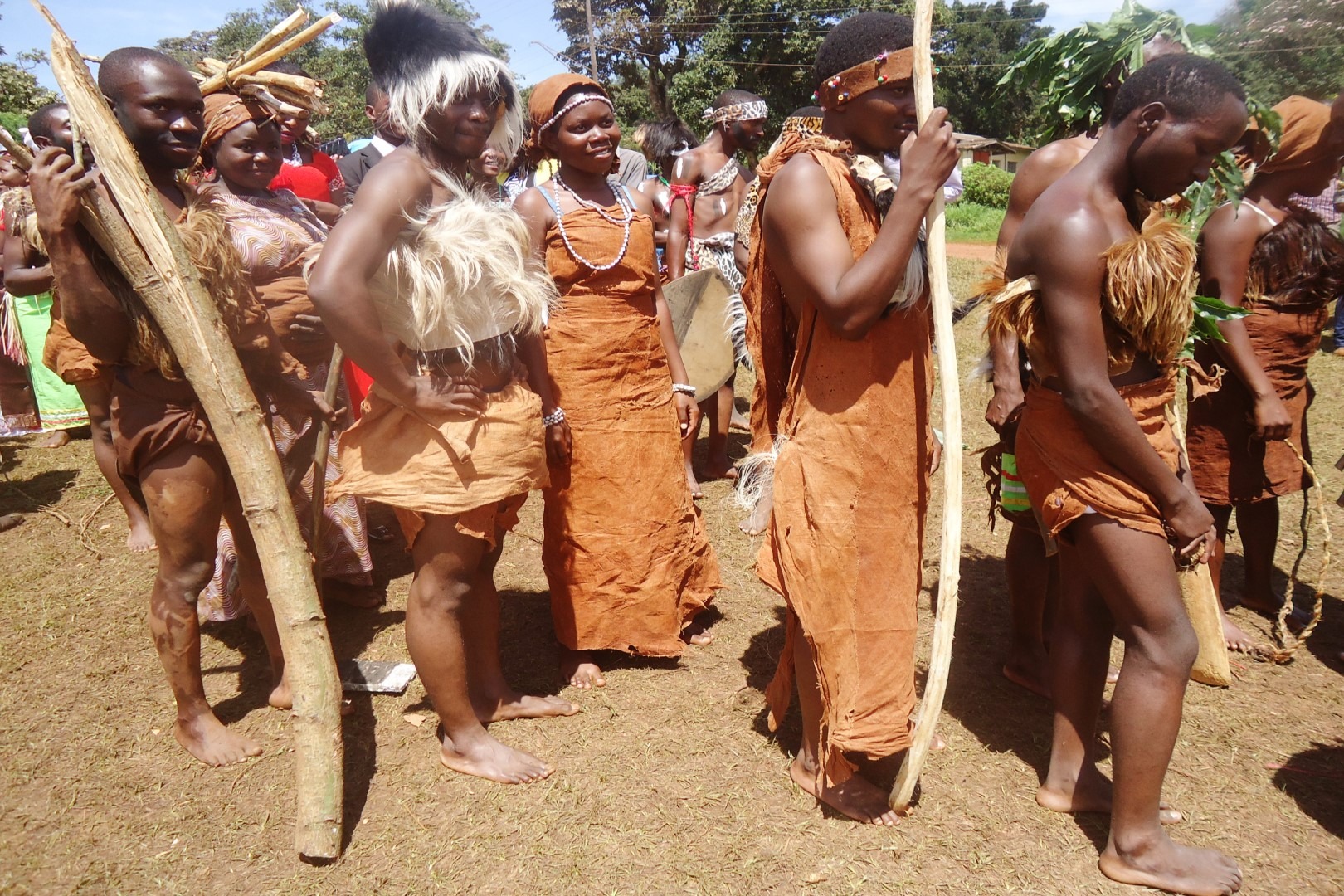 The Bakonzo (also called Bakonjo) are the “people of the snow,” traditional inhabitants of the Rwenzori Mountains that border part of Queen Elizabeth National Park. They are believed to have migrated from Ethiopia centuries ago and developed a unique mountain culture centered around the sacred peaks they call “Mountains of the Moon.”
The Bakonzo (also called Bakonjo) are the “people of the snow,” traditional inhabitants of the Rwenzori Mountains that border part of Queen Elizabeth National Park. They are believed to have migrated from Ethiopia centuries ago and developed a unique mountain culture centered around the sacred peaks they call “Mountains of the Moon.”
The Bakonzo are skilled cultivators who developed elaborate irrigation systems for their mountain-side farms. Their traditional medicine, mythology, and spiritual practices are deeply connected to the mountains, with designated sacred areas for ceremonies and rituals.
The Basongora People
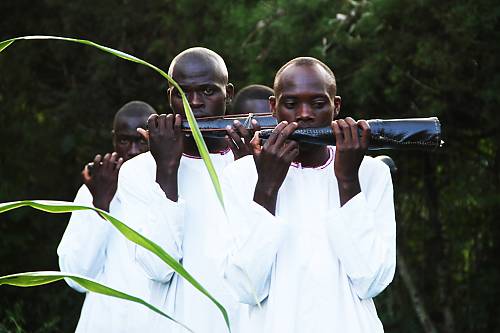 The Basongora are traditionally pastoral nomads who have herded cattle in the savannah areas of western Uganda for centuries. Their close relationship with cattle shapes their entire way of life, from diet (centered around milk, meat, and blood) to social structure.
The Basongora are traditionally pastoral nomads who have herded cattle in the savannah areas of western Uganda for centuries. Their close relationship with cattle shapes their entire way of life, from diet (centered around milk, meat, and blood) to social structure.
Before the establishment of Queen Elizabeth National Park in 1952, the Basongora freely grazed their cattle throughout the area. Park creation significantly restricted their traditional lifestyle, though limited controlled grazing is sometimes permitted during severe droughts. Their cultural demonstrations feature distinctive songs and dances celebrating cattle and pastoral life.
Kibale National Park
The Batooro People
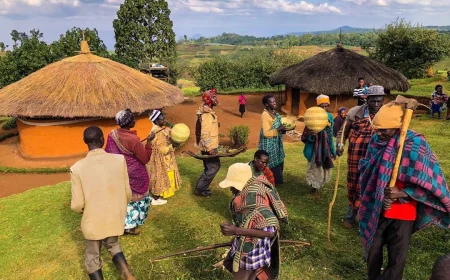 The Batooro belong to the Kingdom of Tooro, one of Uganda’s restored traditional monarchies. Their kingdom was established in the 18th century after splitting from the larger Bunyoro Kingdom. As the dominant tribe around Kibale Forest, the Batooro developed cultural practices that responsibly utilized forest resources while preserving its integrity.
The Batooro belong to the Kingdom of Tooro, one of Uganda’s restored traditional monarchies. Their kingdom was established in the 18th century after splitting from the larger Bunyoro Kingdom. As the dominant tribe around Kibale Forest, the Batooro developed cultural practices that responsibly utilized forest resources while preserving its integrity.
Traditional Batooro homesteads often feature medicinal plant gardens with knowledge passed down through generations. Their cultural heritage includes elaborate royal ceremonies, traditional music featuring the twelve-string “enanga” (harp), and distinctive crafts including bark cloth production.
The Bakiga Communities
Bakiga communities also settled around Kibale, particularly in the southern sections, bringing their agricultural expertise to the region. The interaction between Batooro and Bakiga cultures has created a rich cultural landscape with shared and distinctive traditions.
Murchison Falls National Park
The Acholi People
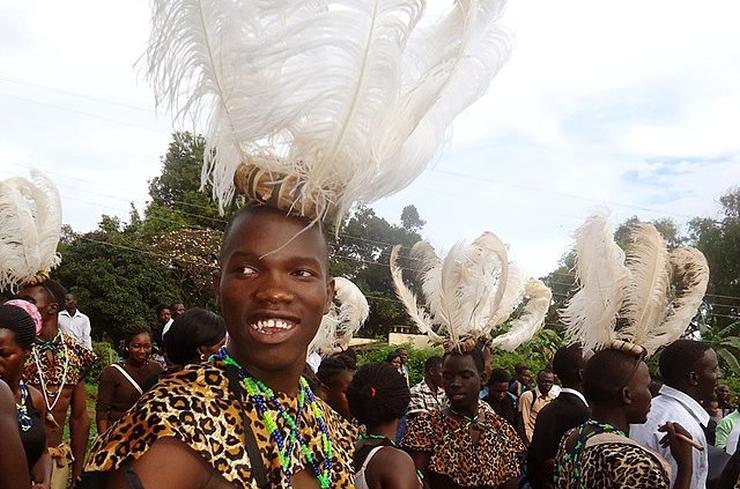 The Acholi people occupy the northern section of Murchison Falls National Park, with a history dating back to the 16th century. Traditionally agro-pastoralists, they maintained a sustainable relationship with the savannah ecosystem through rotational farming and regulated hunting practices.
The Acholi people occupy the northern section of Murchison Falls National Park, with a history dating back to the 16th century. Traditionally agro-pastoralists, they maintained a sustainable relationship with the savannah ecosystem through rotational farming and regulated hunting practices.
Acholi culture is particularly known for its rich oral traditions, complex dance ceremonies, and traditional governance systems based on clan structures. Their “Bwola” royal dance and “Larakaraka” courtship dance are distinctive cultural expressions that continue today.
The Alur People
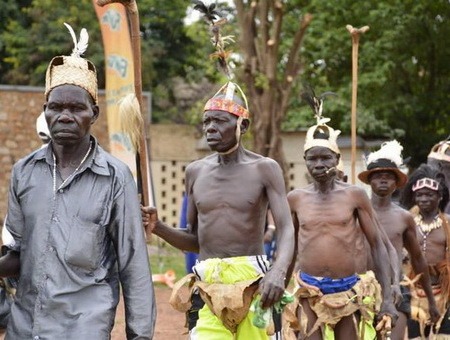 On the northwestern side of the park, the Alur people maintain distinctive traditions despite historical influences from neighboring Acholi and Banyoro peoples. Originally from southern Sudan, the Alur migrated to northern Uganda around the 15th century.
On the northwestern side of the park, the Alur people maintain distinctive traditions despite historical influences from neighboring Acholi and Banyoro peoples. Originally from southern Sudan, the Alur migrated to northern Uganda around the 15th century.
The Alur are known for their fishing traditions along the Albert Nile, distinctive calabash crafts, and traditional music featuring the “adungu” (bow harp). Their social structure is organized around chiefdoms, with traditional leadership playing important roles in community governance.
Kidepo Valley National Park
The Karamojong People
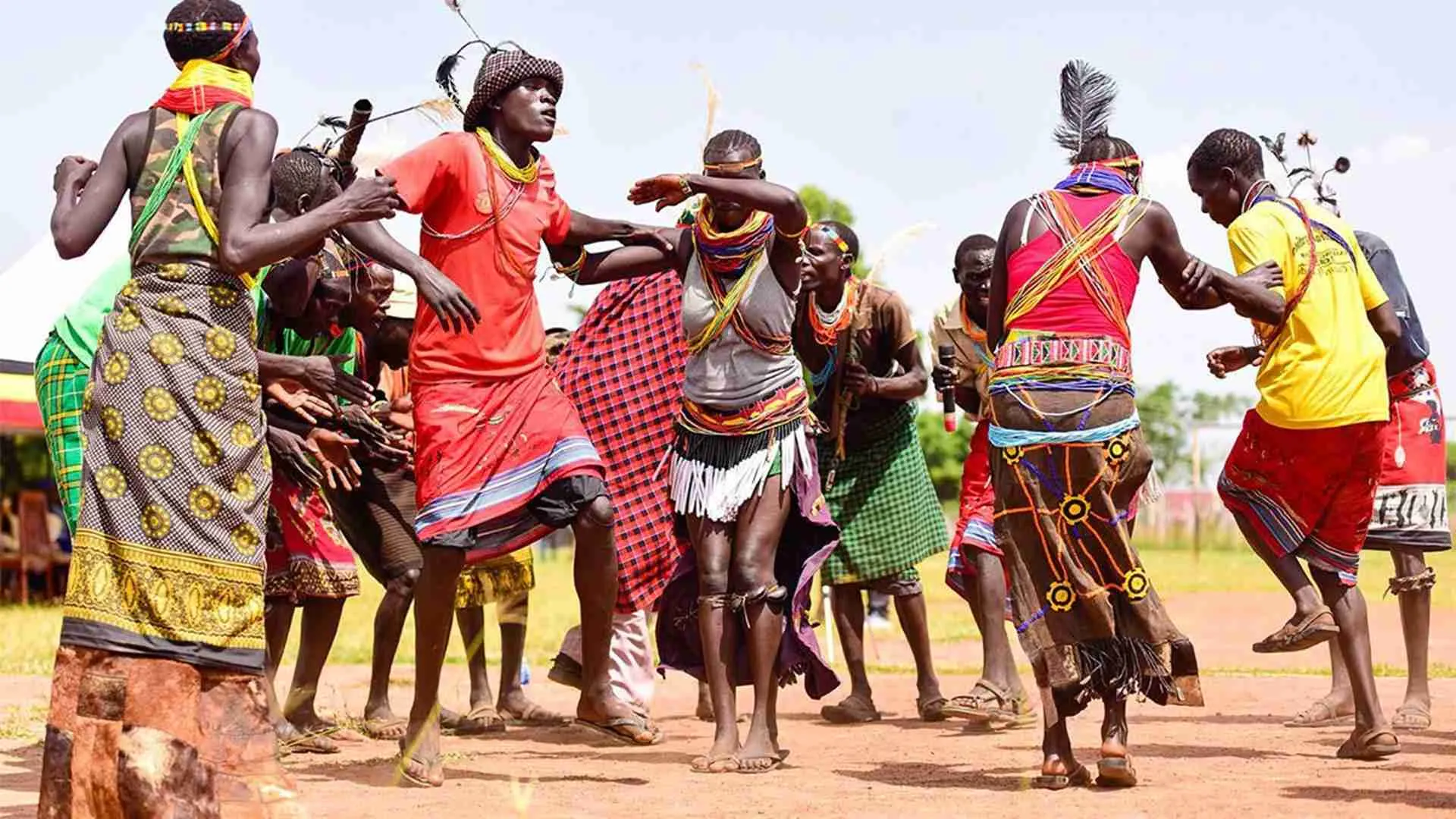 The Karamojong are semi-nomadic pastoralists inhabiting the remote northeastern region around Kidepo Valley. Their way of life has remained largely unchanged for centuries, with cattle central to their economy, social structure, and cultural identity. The number of cattle owned determines a man’s wealth, social standing, and marriage prospects.
The Karamojong are semi-nomadic pastoralists inhabiting the remote northeastern region around Kidepo Valley. Their way of life has remained largely unchanged for centuries, with cattle central to their economy, social structure, and cultural identity. The number of cattle owned determines a man’s wealth, social standing, and marriage prospects.
Karamojong traditional homesteads (manyattas) are circular villages surrounded by thorny barriers for protection. Their distinctive appearance includes beaded jewelry, body scarification, and traditional attire. Despite pressures to modernize, many Karamojong communities maintain their traditional lifestyle.
The IK People
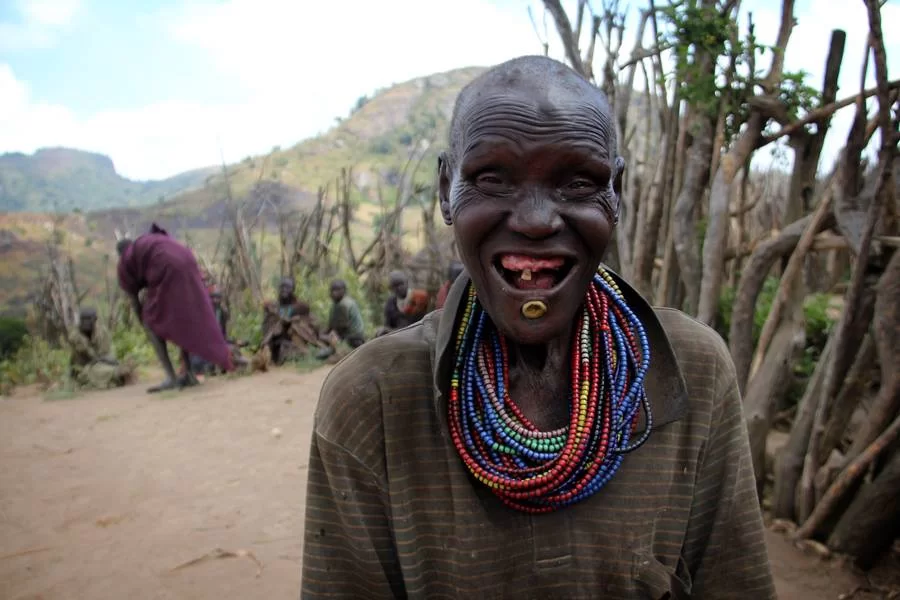 One of Uganda’s smallest and most endangered cultural groups, the IK (or Teuso) people live high in the Morungole Mountains near Kidepo. Once hunter-gatherers of the savannah, they were pushed to higher elevations when the park was established. Their population numbers only a few thousand.
One of Uganda’s smallest and most endangered cultural groups, the IK (or Teuso) people live high in the Morungole Mountains near Kidepo. Once hunter-gatherers of the savannah, they were pushed to higher elevations when the park was established. Their population numbers only a few thousand.
The IK have developed unique agricultural techniques for mountain terrain, including sophisticated water conservation methods. Their isolation has helped preserve distinct cultural practices including their own language, initiation ceremonies, and communal decision-making processes.
Lake Mburo National Park
The Banyankole People
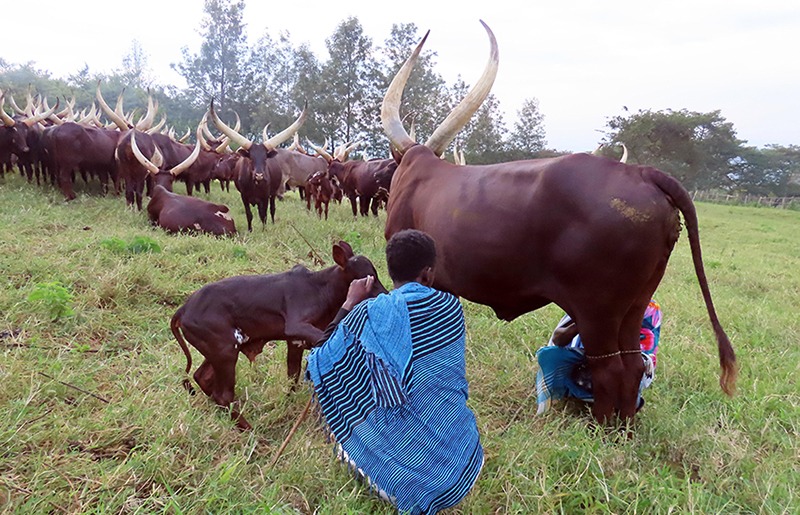
Banyankole culture places enormous value on cattle, which influence everything from marriage customs (bride price is paid in cattle) to traditional diet centered around milk products. Their oral history, songs, and dances celebrate the special relationship between the people and their cattle.
The Bakooki People
The Bakooki are a smaller tribe that historically inhabited parts of what is now Lake Mburo National Park. As agriculturalists, they developed farming methods suited to the region’s variable rainfall. Their cultural traditions include distinctive basket weaving techniques that are now sought-after handicrafts.
Rwenzori Mountains National Park
The Bakonzo People
The Bakonzo are the primary inhabitants around Rwenzori Mountains National Park, with a culture intimately connected to the mountain environment. They call themselves “BaNande” in the Democratic Republic of Congo and “Bakonzo” in Uganda, though they share the same origins.
The Rwenzori mountains are central to Bakonzo spiritual beliefs, with different peaks having specific significance. Their traditional “Ridge Kingdom” was organized around ridge-top communities, each with their own leadership but united by common cultural practices. The Bakonzo spiritual leader, called “Omusinga,” performs important rituals to maintain harmony between the people and mountain spirits.
Mount Elgon National Park
The Bagisu People
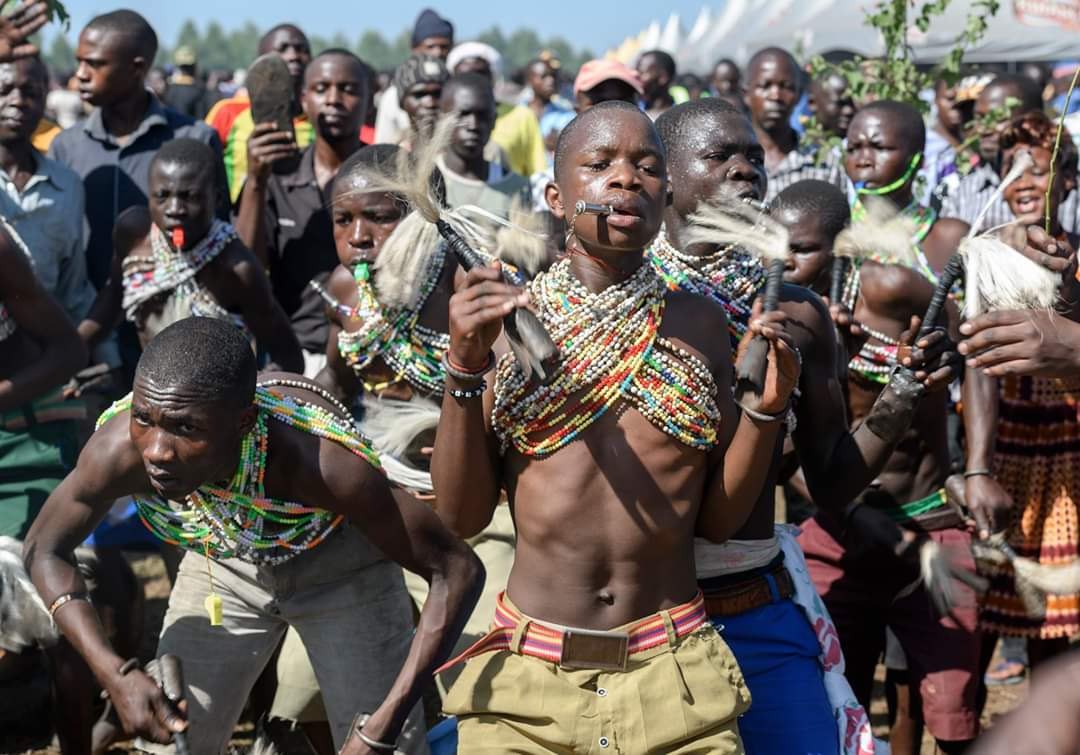
The Bagisu (also called BaMasaba) are the predominant tribe around Mount Elgon, having settled there several centuries ago. They are famous for their “Imbalu” male circumcision ritual, a triennial coming-of-age ceremony featuring distinctive dances, special attire, and face painting. Boys undergoing this ritual must demonstrate courage by not showing pain during the procedure performed without anesthesia.
The Bagisu are skilled cultivators who developed terraced farming techniques to utilize the mountain slopes. Coffee growing has particular cultural significance, with traditional varieties grown long before commercial production began.
The Sabiny People
The Sabiny (or Sebei) people inhabit the northern slopes of Mount Elgon and are related to the Kalenjin of Kenya. Traditionally pastoralists, many have adopted agriculture due to reduced grazing lands. They maintain a distinct cultural identity with their own language and customs.
The Sabiny are known for traditional music featuring unique wind instruments made from antelope horns. Their heritage includes distinctive architectural styles for homesteads and elaborate ceremonies marking life transitions.
Semliki National Park
The Batwa People
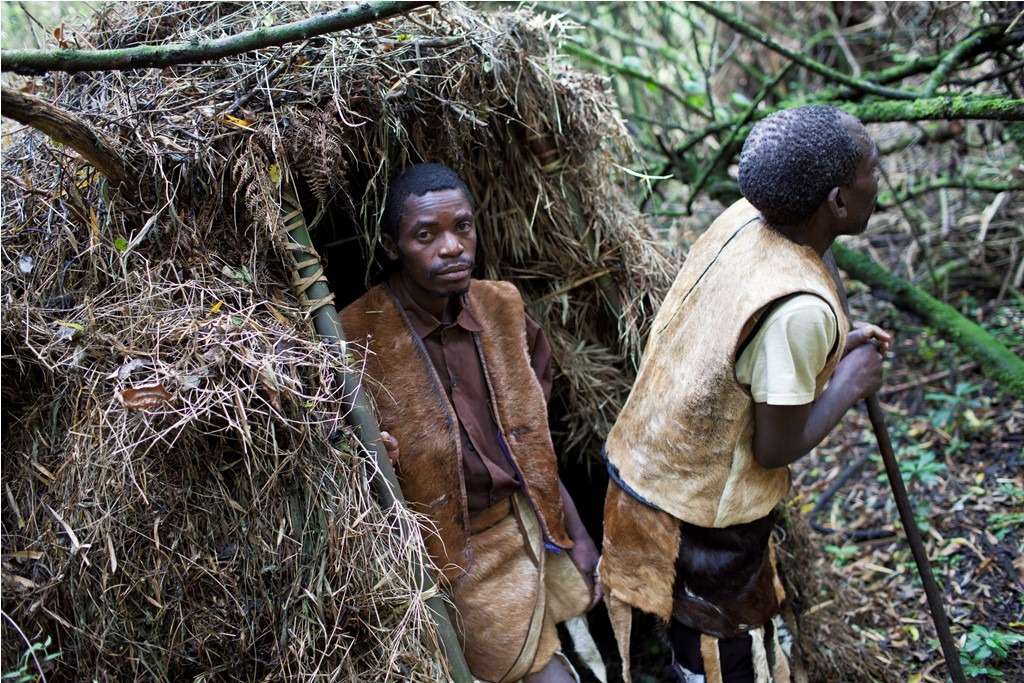
As in Bwindi, a distinct community of Batwa hunter-gatherers traditionally inhabited the Semliki Forest. Their deep knowledge of forest plants, animal tracking, and sustainable resource use evolved over thousands of years of forest dwelling.
The Baamba People
The Baamba are traditionally forest-edge dwellers who developed a culture bridging forest and savannah resources. Their traditional homesteads often feature elevated granaries to protect harvests from moisture and pests.
The Baamba have distinctive musical traditions featuring the “endigiti” (one-stringed fiddle) and various percussion instruments. Their cultural practices include elaborate body decoration for ceremonies and specialized iron-working skills.
Uganda’s national parks not only protect incredible biodiversity but also preserve the living heritage of indigenous cultures that have shaped these landscapes for centuries. The relationship between these communities and protected areas represents both challenges and opportunities. While park creation often displaced or restricted traditional practices, collaborative conservation models increasingly recognize indigenous knowledge and rights.
For visitors, engaging with these cultural communities adds a profound dimension to the safari experience, offering insights into sustainable human-environment relationships developed over generations. Cultural tourism initiatives provide essential economic alternatives for communities affected by conservation restrictions while preserving traditional knowledge that might otherwise be lost.
As Uganda continues developing its tourism sector, the authentic cultural experiences offered by these indigenous communities complement wildlife viewing to create truly transformative travel experiences.
Want ot discover more about these interesting indigenous tribes? You can book a driver-guided safari in Uganda online today by contacting us via email at info@ugandacarrentalservices.com or calling us now on +256-700135510 to speak with the reservations team.
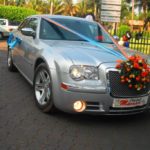
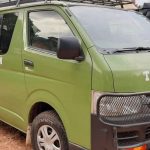
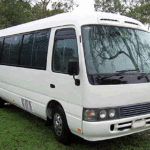

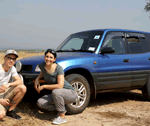
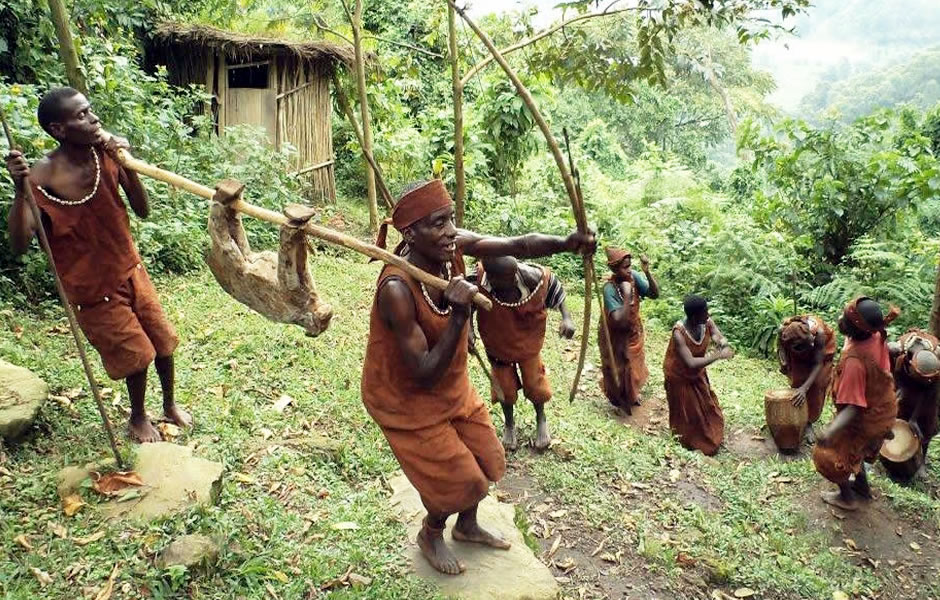
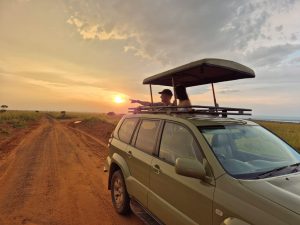
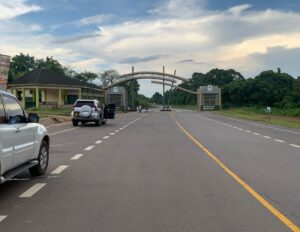
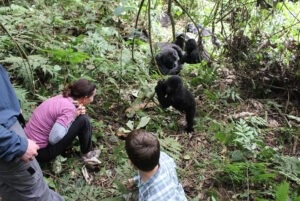
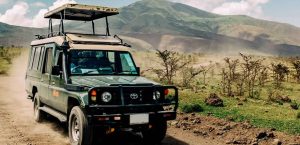
Related Articles
Bwindi Park Ranks Third Best Adventure Destination Globally
The Best 4×4 Cars for Cross-Border Trips Across East Africa
Uganda Self-Drive: 4×4 Driving Tips for the Left Lane